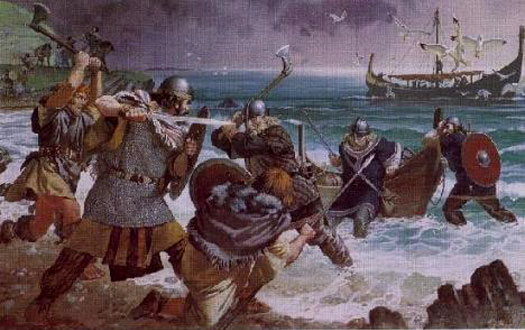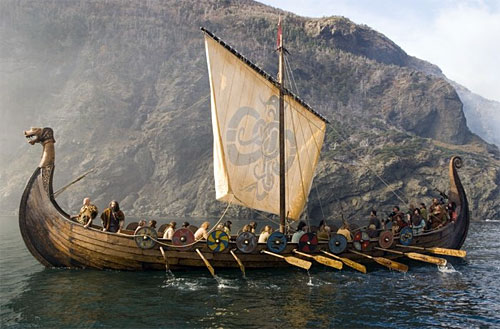IN terms of population, Ireland's history has always seemed fairly consistent; a steady rise from century to century, until a steep drop during the Great Famine in the mid-1800s, following again by another steady rise. Well a new study suggests that this isn't actually the case.
The study, from Queens University Belfast, found that during the 8th and 9th centuries, the population of Ireland was in decline. This trend was only reversed once the Vikings arrived.
Towards the tail end of the 8th century, Vikings, believed to be from Norway, began to raid small parts of the Irish east coast.
 credit: irelandbeforeyoudie
credit: irelandbeforeyoudiePressure on land in Scandinavia had forced many noblemen away from their homes in search of other areas to live, and often other areas to rule. A large proportion of Vikings who sailed from Norway and Denmark in the 700s were younger sons who stood to inherit nothing from their fathers, so they gathered groups of warriors and set sail for distant lands.
It's believed that many of them first sailed to Shetland, and then south to the Orkney Islands, before sailing down the Atlantic Coast towards Ireland.
The first record of Vikings landing in the country took place in AD 795. They landed on Lambay Island just off the coast of Co. Dublin and looted the place.
Over the next 20 to 30 years, Vikings arrived on Irish shores in waves, often raiding small villages quickly before moving on down the coast or even sailing elsewhere, and for half a century, this was the theme. A small cluster of Viking men would pillage an Irish town or two, before retreating to their Scandinavian or British homes.
But during the mid 800s, the raids intensified. So regular were their pillages that going home seemed pointless. They began to set up encampments, known as longphorts, along Irish coastlines. This made it easier to land ships and to attack further inland. Due to Ireland's climate, the raiders started spending the winter there to avoid enduring the harshness of the colder months in Scandinavian.
Ireland had no centralised government at the time, so organising any sort of resistance was futile, and before long, so engrained were the vikings to Irish life, that they began integrating themselves into the daily lives of locals, trading in towns and living among the Irish people.

However, in 902 the King of Leinster and the King of Brega banded together and launched an attack on the key Viking settlement in Dublin. The Viking King of Dublin and his followes fled Ireland half dead and abandoning most of their ships.
The retreat sparked a counter-strike by the Vikings, which came around four years later. The Scandinavians were keen to take back the land they lost and sailed fleets of ships back across the sea in order to do so.
The sheer number of foreign invaders overwhelmed what little strength and cohesion the bickering kings of Ireland had, and the norsemen were back.
Between 914 and 922 they established major settlements on the coasts of Waterford, Cork, Dublin, Wexford and Limerick, and regained their foothold in Irish society.
From here, the two cultures began to gradually come together. There was still friction and trouble with the new settlers, but there was also a degree of cooperation. The vikings brought useful skills and unfamiliar concepts to Irish life, and they gradually became more accepted.
Over the next century, the population of Ireland began to boom. Immigration was undoubtedly a big factor, but so was the lack of Irish infighting due to the forceful Viking presence. Squabbles between would-be kings became far less frequent and the population thrived because of it.

